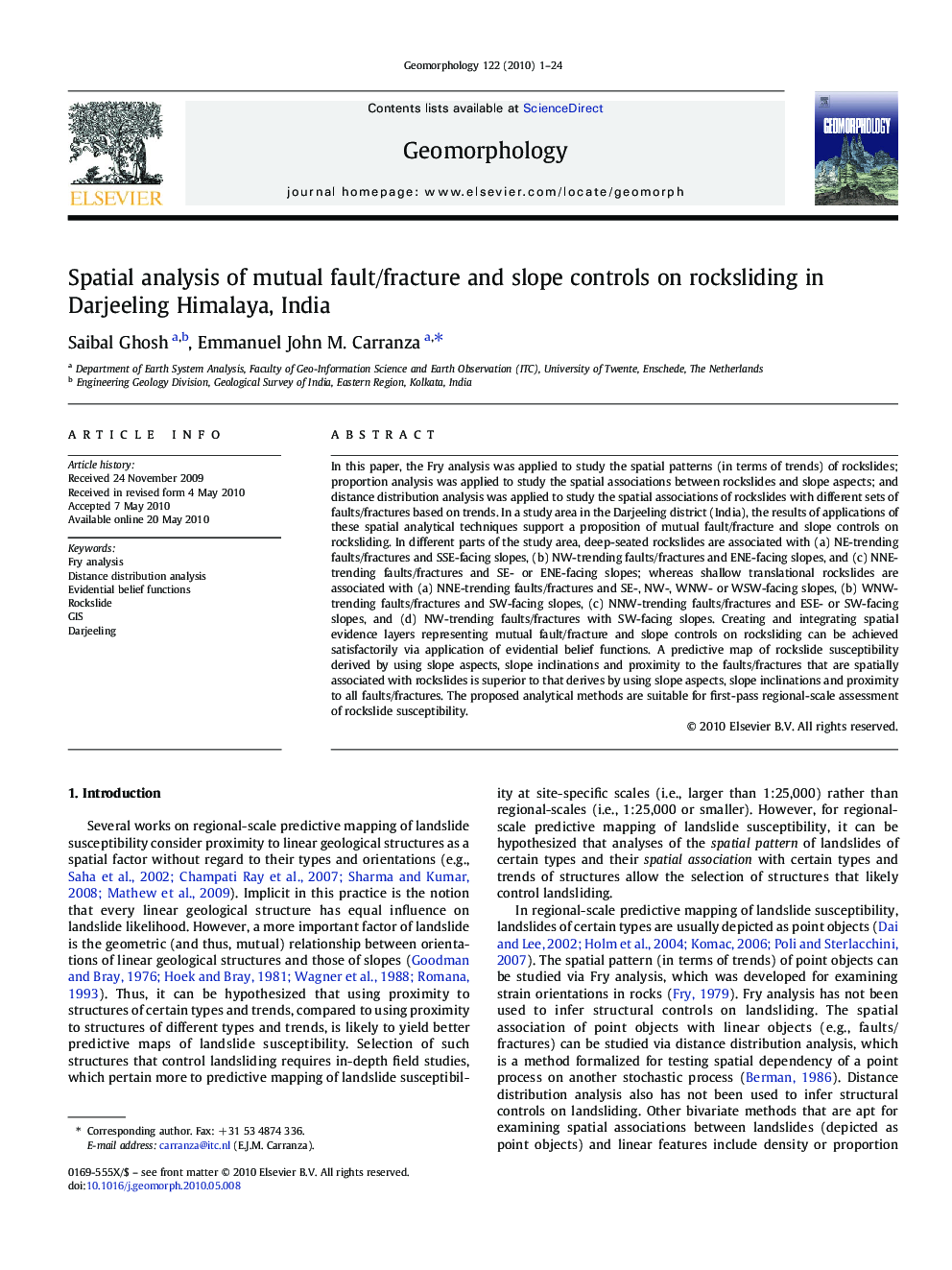| Article ID | Journal | Published Year | Pages | File Type |
|---|---|---|---|---|
| 4685899 | Geomorphology | 2010 | 24 Pages |
In this paper, the Fry analysis was applied to study the spatial patterns (in terms of trends) of rockslides; proportion analysis was applied to study the spatial associations between rockslides and slope aspects; and distance distribution analysis was applied to study the spatial associations of rockslides with different sets of faults/fractures based on trends. In a study area in the Darjeeling district (India), the results of applications of these spatial analytical techniques support a proposition of mutual fault/fracture and slope controls on rocksliding. In different parts of the study area, deep-seated rockslides are associated with (a) NE-trending faults/fractures and SSE-facing slopes, (b) NW-trending faults/fractures and ENE-facing slopes, and (c) NNE-trending faults/fractures and SE- or ENE-facing slopes; whereas shallow translational rockslides are associated with (a) NNE-trending faults/fractures and SE-, NW-, WNW- or WSW-facing slopes, (b) WNW-trending faults/fractures and SW-facing slopes, (c) NNW-trending faults/fractures and ESE- or SW-facing slopes, and (d) NW-trending faults/fractures with SW-facing slopes. Creating and integrating spatial evidence layers representing mutual fault/fracture and slope controls on rocksliding can be achieved satisfactorily via application of evidential belief functions. A predictive map of rockslide susceptibility derived by using slope aspects, slope inclinations and proximity to the faults/fractures that are spatially associated with rockslides is superior to that derives by using slope aspects, slope inclinations and proximity to all faults/fractures. The proposed analytical methods are suitable for first-pass regional-scale assessment of rockslide susceptibility.
